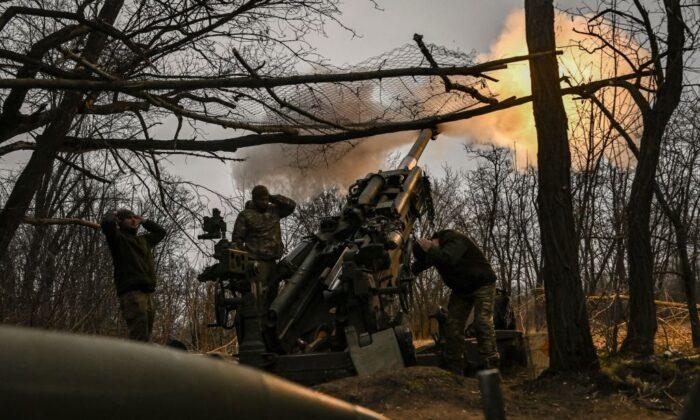The U.S. Army’s stockpiles are vanishing at an alarming rate as the nation struggles to arm Ukraine and provide for its own defense at the same time, according to the Army’s most senior civilian leader.
More than 60 percent of the security assistance provided to Ukraine by the United States has come from the U.S. Army, Secretary of the Army Christine Wormuth said during a March 30 hearing of the Senate Armed Services Committee.
“To assist Ukraine in fighting Russia, the Army has provided over $20 billion of lethal assistance, including a wide range of munitions, radars, combat vehicles, and other things,” Wormuth said.
The United States has contributed more than $32 billion in lethal aid to Ukraine since Russia began its attempted conquest last year, much of that aid coming from the Army’s munitions stockpiles.
To that end, Wormuth said that the United States’ own stockpiles of munitions, including the 155 mm rounds used by many artillery systems, are running low and that the Army is in overdrive trying to increase production.
“One of the most important things we have learned from Ukraine is the need for a more robust defense industrial base,” she said.
“We are buying at the absolute edge of defense industrial capacity right now.”
US Munitions Stockpiles Running Low
Hurdles remain toward creating an “organic supply base” for such munitions despite the investment. Most notable among them is the United States’ reliance on high-end munitions that require specialized equipment and supply chains to produce.Many such systems, Wormuth said, will take years to build up.
“Some of the machining tools that are needed to open up new production lines are just very large, complex machines themselves that take time to fabricate and time to install,” she said.
“We are creating this production capacity, trying to create options for future decisions in terms of how much we’ll need. But if we don’t do the production ramp-ups, we won’t have those choices to make in the first place,” Bush said during a March 3 talk at the security-focused think tank Center for Strategic and International Studies (CSIS).
“The long-term challenge will be how much of that capacity can we sustain over time, post-conflict,” he added. “We don’t know how long the conflict will last. We don’t know how low our stocks will be.”
‘Thousands of US Soldiers’ Deployed to Assist Ukraine
Thousands of U.S. troops are currently deployed to provide assistance to the Ukrainian military, according to Sen. Roger Wicker (R-Miss.), the ranking member of the Senate Armed Services Committee.“Thousands of U.S. soldiers are deployed to provide logistics to supply Ukraine’s military,” Wicker said during the hearing. “Thousands more are training Ukrainian military personnel.”
He said that the troops are providing “critical on the ground support” to Ukrainian forces, which have “significantly degraded” Russia’s military capabilities.
Though U.S. boots are on the ground around the world, Wicker clarified, no U.S. soldiers are engaged in fighting against the Russian military.
“No U.S. soldiers are fighting against Russia in its brutal invasion of Ukraine,” Wicker said.
“This is Ukraine’s fight, and it is fighting well and valiantly.”
The Pentagon likewise said that only a small number of U.S. troops are on the ground in Ukraine.
“There are only a small number of [Defense Department] personnel currently in Ukraine supporting normal embassy operations, consistent with the activities performed at embassies around the world,” a Pentagon spokesperson said in an email to the Epoch Times.
“To support the historic level of security of assistance support for Ukraine, the [Department of Defense] established a dedicated headquarters element at European Command in Germany, the Security Assistance Group-Ukraine (SAG-U). SAG-U’s mission is to support security assistance activities, coordinate training efforts, oversee efforts to supply and equip the Ukrainian Armed Forces, and enhance Ukraine’s situational awareness as part of our long-term commitment to Ukraine alongside our Allies and partners.”





